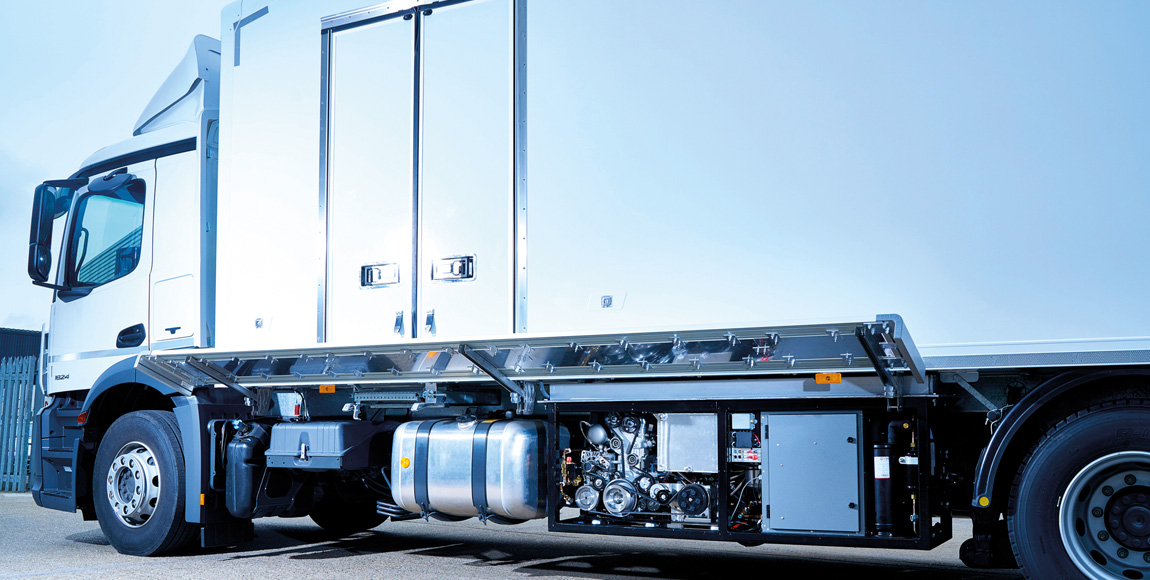Cold alchemy

COLIN BARNETT, group technical editor, Commercial Motor magazine, ponders if air could soon power our vehicles.
What would you say if you were offered an engine that runs on fresh air? You’d probably think it was a scam, a modern-day version of fraudulent alchemists offering to turn base metal into gold, but that’s exactly what Dearman Technology is doing.
Granted, the engines being offered are more likely to run on nitrogen than air, simply because liquid nitrogen is a largely unwanted by-product of liquid oxygen, which is produced in very large quantities for industrial and medical applications … but the principle is the same. In financial or environmental terms it’s not totally free, though, as electricity is required to compress air to its liquefied components.
How it works
The hardware involved is basically a simple piston engine similar to a conventional internal combustion engine (ICE).
For the initial real-world application, Dearman has chosen the ubiquitous truck-mounted refrigeration unit, using a single-cylinder engine to produce around 5 kW (7 hp). The next stage under development is a larger four-cylinder unit developing around 100 kW (134 hp), planned for use as a zero-emission launch-assist device for city buses.
Key to the Dearman system’s operation is the fact that liquid nitrogen has an expansion ratio of around 710:1 between its liquid and gas stages.
The “fuel” has two components: the liquid nitrogen and a heat exchange fluid (HEF). The HEF is usually similar in content to an ICE’s engine coolant, and this, or its heat via an exchanger, could be used to raise the efficiency of the Dearman engine.
The process begins downstream of the engine. Liquid nitrogen, stored at around three kilopascals (kPa), is pressurised to 40 kPa and pumped into a vapourising heat exchanger that provides cooling for the load compartment. This stage provides around 65 percent of the system’s total cooling.
The next stage introduces the Dearman engine to the process. In operation, as its piston rises, ambient or warmed HEF is fed into the cylinder. As it reaches the top of its stroke, cryogenic nitrogen is injected into the cylinder where, on contact with the warmer HEF, it rapidly expands and pushes the piston down, converting the energy into shaft power in a similar way to the familiar power stroke on an ICE.
The HEF is collected and reheated for further use, while the now-expanded and gaseous nitrogen is released to the atmosphere as the only local emissions. This stage provides the drive for the vapour-compression refrigeration cycle to deliver the rest of the cooling process, as well as generating electricity, or direct drive, for the various pumps and fans within the overall system.
One further refinement being considered is using engine exhaust heat for defrosting the chilled compartment.
The energy density of liquid nitrogen is similar to current electrical batteries, but without the slow recharging. In normal operation, the system consumes a 400 to 500 kg tank every two days, with refuelling times similar to a diesel pump.

At the current cost of liquid nitrogen, it would cost around R217,71 per day, with a total cost of ownership giving a payback time well within the first life of the base vehicle. The engine is said to have a life between major overhauls of
5 000 hours – with the absence of internal combustion giving seals and bearings an easier life than on a diesel engine.
The first stage of in-service trials has successfully completed its 18-month programme; the Cool-E Volvo operating for Sainsbury in the United Kingdom. While this was effectively a hand-built prototype, the next stage will feature a near production-ready vehicle based on a Mercedes-Benz Antos 1824 – again destined for use by Sainsbury.
The entire system on the Antos weighs in at around 1 250 kg (about 400 kg more than a comparable diesel system), but Dearman feels this is an acceptable penalty on an 18-t vehicle, and there is further scope for weight-saving measures to be made. Dearman sees the market in the thousands by the end of the decade.
What is liquid nitrogen?
Liquid nitrogen is a by-product that is produced when air is liquefied to create liquid oxygen. It is widely available, but at the moment there is a limited market for liquid nitrogen. It would be quite feasible for large transport companies to operate their own liquefaction plants, but it’s debatable whether that’s needed at present. Dearman estimates that it would become cost-effective for a depot servicing 30 to 40 18-t trucks.
Liquid nitrogen is delivered by 44-t articulated tankers, in Dearman’s case into a two-storey, 2,5-m diameter tank. The product is totally non-toxic, but does need to be handled in a well-ventilated space, as in the unlikely event of a leak it would cause asphyxiation by displacing atmospheric air.
The rather worrying looking “smoke” emanating from the pipes during transfer is simply water vapour condensing on the very cold surfaces.
About Dearman Technology
The Dearman history is remarkably short, with serious development of this system starting only in 2013, but the story goes back further. Peter Dearman, described as a “garden shed inventor”, grew up under the cloud of the end of oil being just around the corner.
For years, Dearman had been obsessed by the idea of an engine powered by liquid air, which he saw as an efficient means of energy storage, using sustainable and cheap off-peak electricity to create the “fuel”, which could then be converted back to motive power.
Around 2000, Dearman produced his first prototype, which was built from scrap including parts from a Yamaha motorcycle, a Fiat 500 and a resuscitation training dummy, as well as some handmade bits.
The second generation of prototypes (as used in the Volvo truck), used new, hand-built parts, but the latest third-generation version uses some components that have been CNC manufactured in-house, and some bought-in from specialist low-volume suppliers such as the motorsport industry.
The proposed volumes have reached the level to give the project credibility with suppliers. As the concept moves towards true production, the company is expanding, currently employing around 80 staff at its technology centre near Croydon.
Published by
Focus on Transport
focusmagsa




